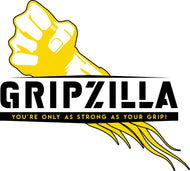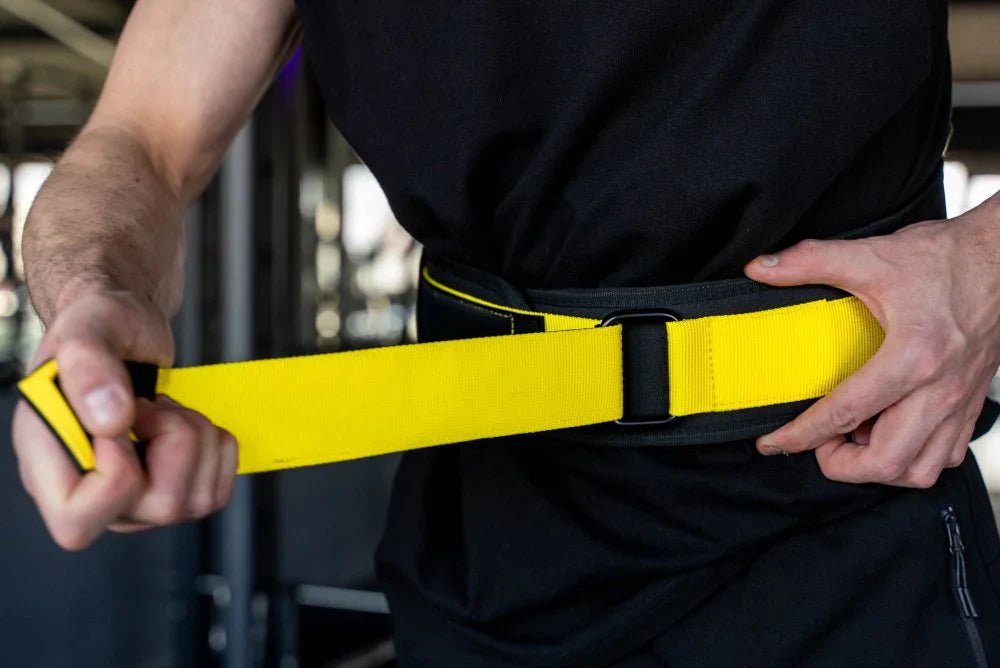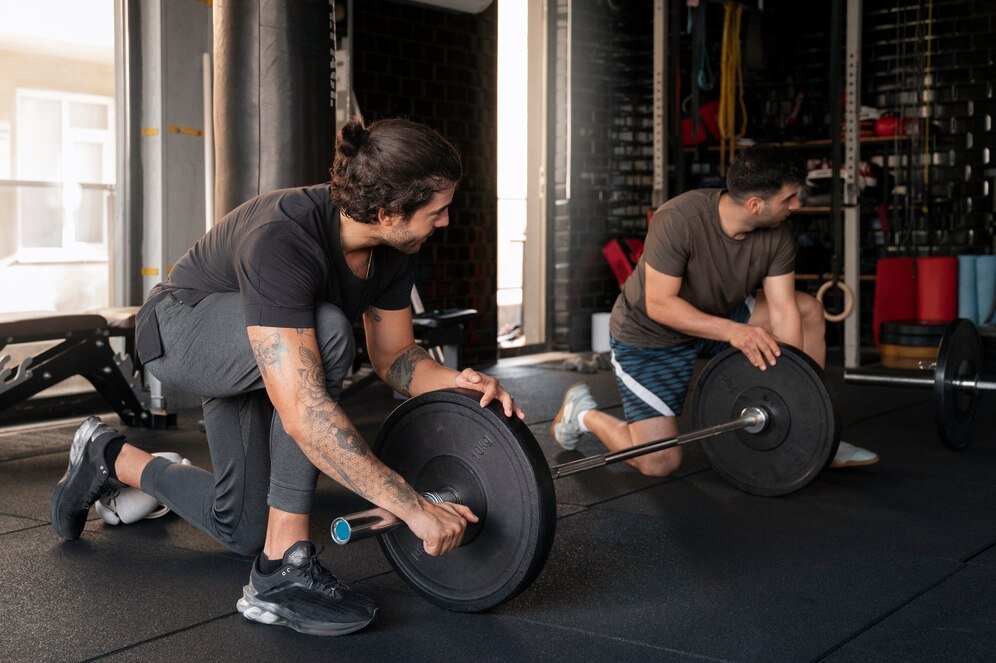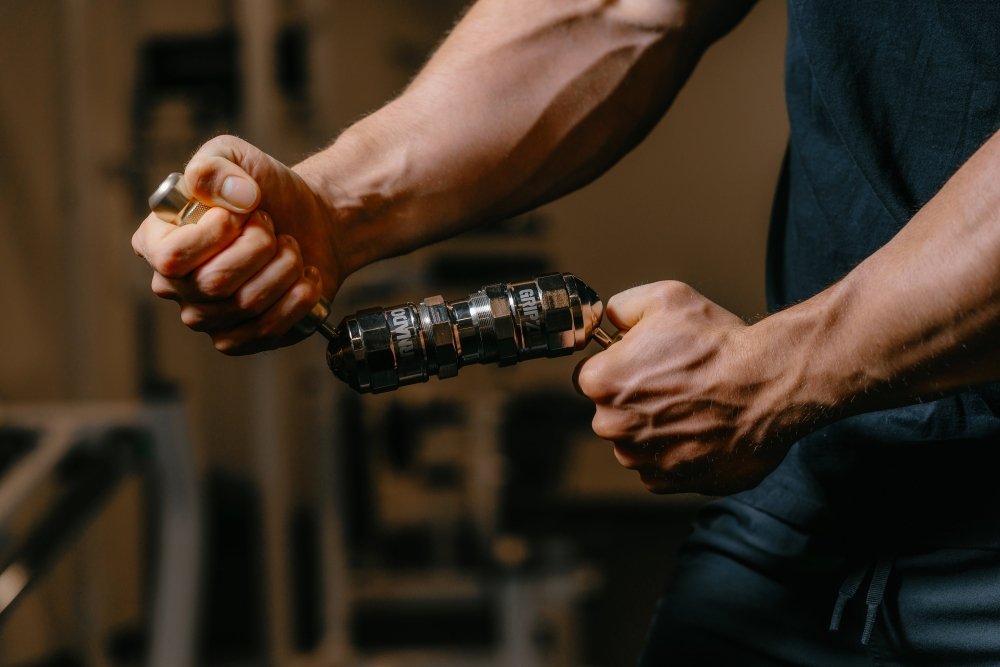Think about this for a second that you're under a heavy barbell, heart racing, the weight feels like it could crush a small car.
You take a deep breath, brace hard... but your core collapses mid-lift. Game over.
That's where knowing how to wear a weightlifting belt correctly separates the pretenders from the heavy hitters.
If you're ready to lift heavier, lift smarter, and stay injury-free, you’ve got worth-reading stuff coming up:
What is a Weightlifting Belt?
 A weightlifting belt isn't just a gym accessory, it's a tool that supports your midsection during heavy lifts.
A weightlifting belt isn't just a gym accessory, it's a tool that supports your midsection during heavy lifts.
It's built to stabilize your spine by increasing intra-abdominal pressure, giving you a rock-solid foundation to press, squat, and deadlift monster weight.
There are two main types of belts to consider:
- Powerlifting belts: Thick, stiff, built for maximum support.
- Olympic lifting belts: Slightly thinner, more flexible for dynamic lifts like cleans and jerks.
Choosing the right belt for your goals is crucial for using a weightlifting belt correctly.
Benefits of Using a Weightlifting Belt
 Let's be real: if you’re serious about making gains and staying healthy, a belt can be your best training partner. Here’s why:
Let's be real: if you’re serious about making gains and staying healthy, a belt can be your best training partner. Here’s why:
- Core stabilization: Locks your torso into a strong, safe position.
- Increased intra-abdominal pressure: More pressure equals more power.
- Injury prevention: Keeps your spine aligned when lifting maximal loads.
- Enhanced lifting performance: Bigger lifts mean faster progress.
Using a weightlifting belt for beginners can fast-track technique mastery and strength gains when applied correctly.
When Should You Wear a Weightlifting Belt?
Pro tip: Don't belt up for every exercise. Save it for the big guns. Wear it when you're hitting:
- Squats over 80% of your one-rep max
- Deadlifts and rack pulls
- Overhead presses and heavy carries
- Max-effort or near-maximal lifts
If you’re wondering when to wear a weightlifting belt, the rule is simple: heavy, compound lifts where core bracing is critical.
Step-by-Step: How to Wear a Weightlifting Belt Properly
 1. Choose the Right Belt
1. Choose the Right Belt
First things first, your belt needs to match your grind. Go for a solid leather belt like this beast if you're serious about lifting heavy.
2. Find the Correct Position
Weightlifting belt positioning is crucial. You want the belt to sit snugly around your midsection, usually across or just above the belly button. Too high and you can't brace properly; too low and you’ll lose support.
For squats, a lower lifting belt placement stabilizes the hips. For deadlifts, a slightly higher position can help brace the lower back better.
3. Tighten the Belt Correctly
How tight should a lifting belt be? Here's the deal: tight enough to feel solid when you push out against it, but not so tight that it restricts breathing.
You should be able to wedge a finger in between your belt and body. Remember, you're creating a wall to push against, not suffocating yourself.
4. Practice Bracing with the Belt
Wearing the belt is just step one. To use it like a pro, you need to practice bracing with a lifting belt:
- Take a huge breath deep into your belly.
- Push your stomach out against the belt.
- Maintain that pressure as you initiate the lift.
Proper bracing multiplies the effectiveness of using a weightlifting belt correctly. Without it, the belt is just an expensive accessory.
5. Adjust Based on the Exercise
Every lift is different, and so is your belt placement. You might need to shift the belt slightly up or down based on whether you're squatting, pulling, or pressing.
Mastering how to position a weightlifting belt for squats vs deadlifts can be the difference between a new PR and a missed lift.
Common Mistakes When Wearing a Weightlifting Belt
Even seasoned lifters get these wrong:
- Belting up for lightweight sets — Save it for heavy work.
- Wearing the belt way too loose — If you can't brace, it’s pointless.
- Over-relying on the belt — Your core should still be doing work.
- Forgetting to practice proper breathing techniques — No breath control = no stability.
Avoiding these mistakes ensures you're using a weightlifting belt correctly for serious gains.
Final Tips for Wearing a Belt Like a Pro

- Use your belt for heavy sets, not warm-ups or accessory work.
- Focus on mastering the breath-and-brace technique.
- Keep building your raw core strength alongside belt work.
When you're ready to lift smarter, not just harder, grab the Gripzilla Lifting Belt. Built tough for lifters who mean business.
FAQs
Should beginners use a weightlifting belt?
Yes, but smartly. First, build base core strength, then introduce the belt for heavier lifts.
Can a belt weaken your core?
Only if you misuse it. A belt used correctly teaches better core engagement.
How do I know if my belt fits properly?
You can take a deep, braced breath and maintain pressure without slipping or squeezing too hard.



